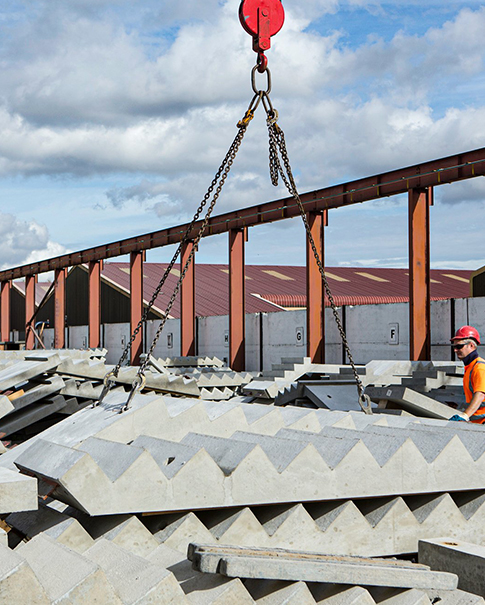-

Envie-nos um e-mail
sale@lscmagnetics.com -

Número de contato
+86 -13559234186

Envie-nos um e-mail
sale@lscmagnetics.com
Número de contato
+86 -13559234186
Na sociedade atual, a segurança e a qualidade da indústria alimentícia são uma das maiores preocupações dos consumidores. Embora o ajuste das políticas de terras raras nos últimos anos pareça estar distante da indústria alimentícia, ele, na verdade, tem um profundo impacto indireto sobre ela, afetando os principais componentes dos equipamentos de produção de alimentos: os removedores de ferro líquidos. Com a desaceleração na taxa de crescimento dos indicadores de controle total da mineração de terras raras e a implementação de políticas como o controle de exportação, a estabilidade do fornecimento de terras raras foi afetada. Isso levou aos seguintes problemas enfrentados pelos fabricantes de removedores de ferro líquidos.
Onda de choque na indústria de fabricação de equipamentos: O núcleo magnético do removedor de ferro fluido depende de elementos de terras raras (como neodímio e disprósio) para criar um forte campo magnético. O endurecimento das políticas levou a três grandes reações em cadeia:
Pressão de custos: as flutuações nos preços das terras raras fizeram com que o custo dos materiais magnéticos de alto desempenho aumentasse de 30% a 50%, reduzindo as margens de lucro dos fabricantes de equipamentos
Atrasos na entrega: O ciclo de aquisição de matéria-prima foi estendido das habituais 4 semanas para mais de 12 semanas, afetando os planos de entrega dos equipamentos
Tecnologia forçada: as empresas são forçadas a desenvolver ímãs híbridos com baixo teor de terras raras ou recorrer a alternativas como ferritee

Removedor de ferro fluido: por que é o guardião invisível da segurança alimentar
Na pasta viscosa da geleia e no fluido branco leitoso do leite, impurezas ferromagnéticas (tamanho de partícula abaixo de 50 μm) que são difíceis de distinguir a olho nu representam uma ameaça fatal - 0,1 grama de limalha de ferro é suficiente para fazer com que todo o lote de produtos exceda o padrão microbiano.
Pontos problemáticos da aplicação na indústria alimentícia
Poluição de matéria-prima: A taxa de detecção de limalhas de ferro provenientes do desgaste de máquinas agrícolas em soja e trigo nacionais é de até 120 ppm (matérias-primas importadas ≤ 50 ppm)
Riscos de processamento: resíduos de soldagem de tubos metálicos, partículas de desgaste de lâminas de moagem
Consequências: 0,1 g de limalha de ferro pode levar a:
Oxidação e ranço das gorduras (os íons de ferro são catalisadores da oxidação)
Crescimento microbiano (limalhas de ferro arranham a embalagem e causam vazamento)
Danos aos dentes do consumidor (fragmentos de metal duro)
Princípio de funcionamento de Armadilha magnética para líquidos
Quando matérias-primas líquidas fluem através de um tubo equipado com ímãs permanentes de terras raras, o dispositivo, com uma intensidade de campo magnético de até 12.000 Gauss, consegue capturar partículas de ferro em nanoescala com uma eficiência superior a 99,97%. Esta é a personificação da insubstituibilidade dos elementos de terras raras: o produto de energia magnética dos ímãs de NdFeB é 10 vezes maior que o dos ímãs comuns sob o mesmo volume.
Mecanismo central: filtragem de precisão em campo magnético
A essência do removedor de ferro fluido é usar ímãs permanentes de terras raras para criar um campo magnético de alta intensidade para obter a remoção de impurezas sem contato durante o fluxo de alimentos líquidos:
Intensidade do campo magnético: os ímãs de NdFeB geram um forte campo magnético de 12.000 a 15.000 Gauss (equivalente a 24.000 vezes o campo magnético da Terra), que pode capturar partículas ferromagnéticas tão pequenas quanto 0,5 mícron.
Captura dinâmica: quando o líquido flui através do conjunto de barras magnéticas ou da tubulação magnética, impurezas como limalhas de ferro, escória de soldagem e partículas metálicas causadas pelo desgaste do equipamento são adsorvidas magneticamente na parede do tubo, e o fluido purificado continua a fluir.
Indicadores principais: A eficiência de remoção de ferro atinge 99,97% (para impurezas com tamanho de partícula ≥50μm), superando em muito os filtros tradicionais (90%~95%).
No contexto do ajuste contínuo das políticas de terras raras, os removedores de ferro líquidos continuarão a fornecer um suporte fundamental para a indústria alimentícia. Se as empresas alimentícias os utilizarem bem, poderão lidar eficazmente com os desafios impostos pelas mudanças nas matérias-primas, garantir a estabilidade da qualidade dos produtos, atender aos rigorosos requisitos de segurança alimentar dos consumidores e desenvolver-se de forma constante em um ambiente de mercado complexo. Além disso, com os crescentes requisitos para a detecção de resíduos de ferro na indústria alimentícia, como a obrigatoriedade de detecção de resíduos de ferro na nova norma FDA 2025, a demanda do mercado por removedores de ferro líquidos na indústria alimentícia também aumentará ainda mais.
No grande ambiente, devemos nos manter atualizados sobre as mudanças nas políticas de terras raras: prestar muita atenção ao ajuste das políticas nacionais de terras raras, como a implementação do controle total da mineração, controle de exportação e outras políticas, e fazer os preparativos com antecedência.
Referência padrão da indústria:
Norma Nacional da China: disposições obrigatórias da GB 14881-2013 "as linhas de produção de líquidos devem ser instaladas com equipamentos de remoção de ferro"
Norma da UE: CE 1935/2004 exige resíduos metálicos ≤3ppm (comida para bebês ≤1ppm)
Testes e certificação: A eficiência de remoção de ferro deve ser verificada através do sistema HACCP e testes de terceiros a cada trimestre